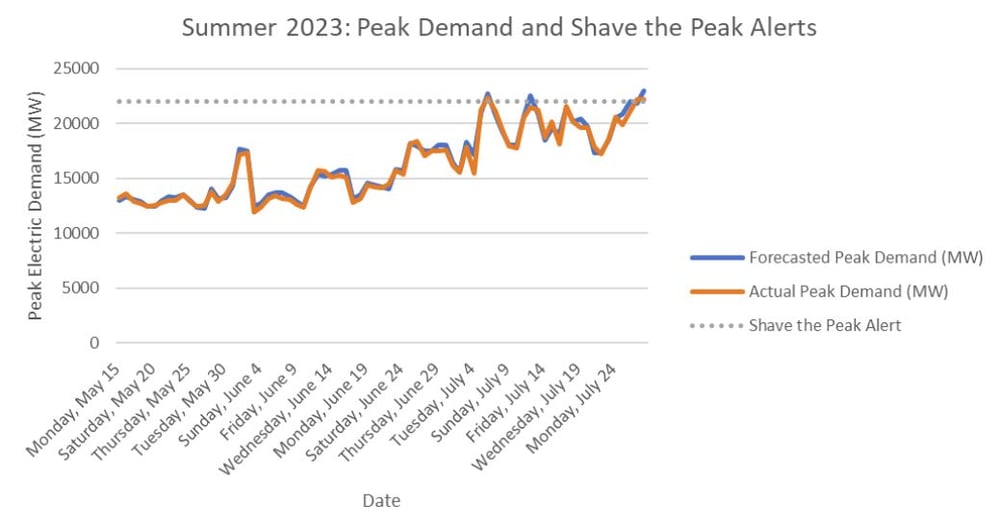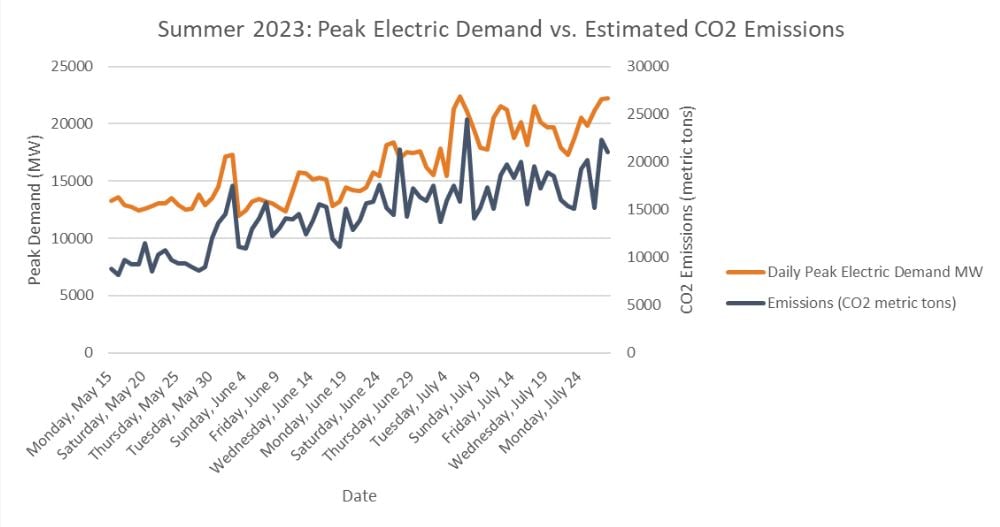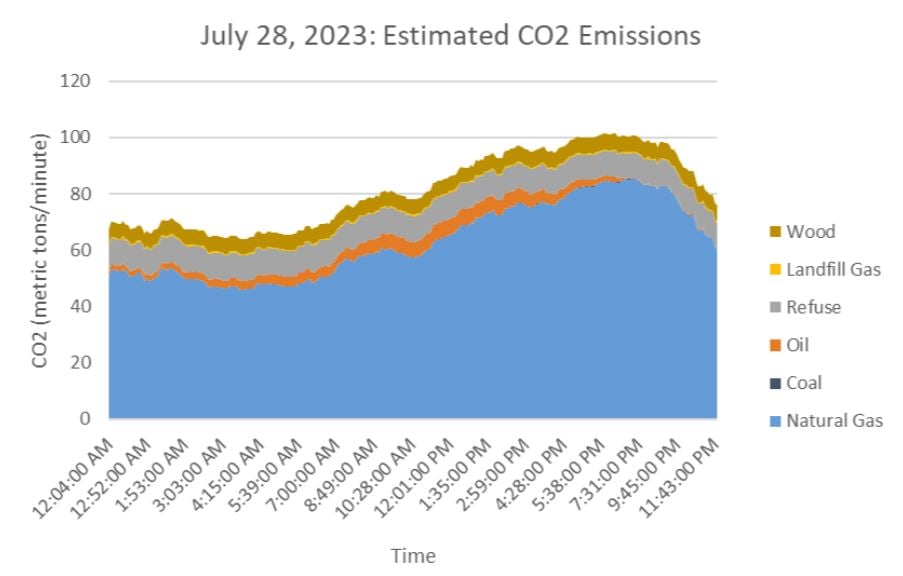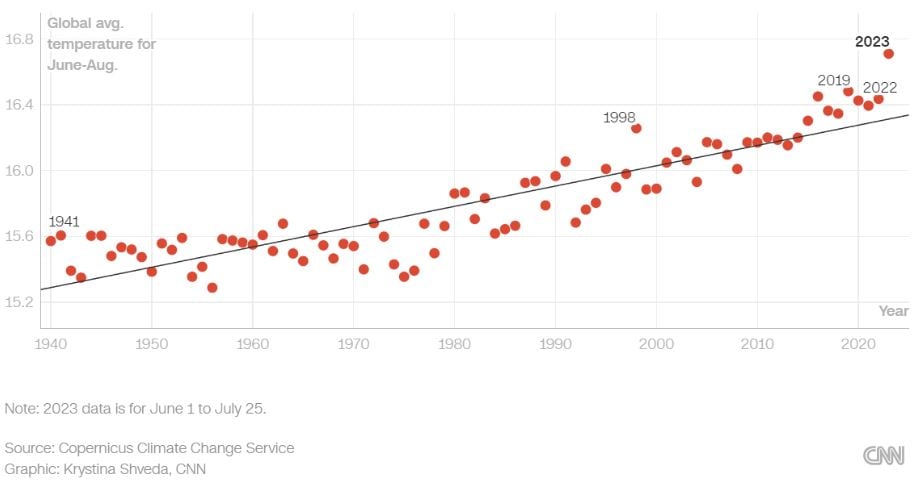We have sent six “Shave the Peak” alerts this summer, signaling high peak electric demand days. Shave the Peak is our program designed to inform people, via text and email alerts, how and when to reduce their power usage on days when the forecasted electric demand is above 22,000 MW.
While New England summer temperatures remain high and air conditioners stay on, we expect to have more peak days. Peak days are when the grid produces the most fossil fuel emissions, and the price of electricity is the highest.
The following table are the days we have sent peak alerts along with the forecasted and actual peak electric demand recorded by ISO-New England. New England’s hourly systemwide demand forecasts are updated daily based on the amount of electricity expected to be used. The goal of shaving peaks is to reduce electric usage to decrease the actual peak demand for the day. Luckily, behind-the-meter (BTM) solar, installed on residential and commercial properties, has helped reduce peak electric demand. Without BTM solar, there would have been even higher wholesale prices and more carbon dioxide emissions.
| Date |
Forecasted Peak Electric Demand |
Actual Peak Electric Demand |
Peak Load Including BTM Solar |
| July 6, 2023 |
22,700 MW |
22,389 MW |
24,264 MW |
| July 12, 2023 |
22,500 MW |
21,500 MW |
23,552 MW |
| July 17, 2023 |
21,520 MW |
21,554 MW |
23,422 MW |
| July 26, 2023 |
22,000 MW |
21,170 MW |
22,903 MW |
| July 27, 2023 |
21,850 MW |
22,191 MW |
23,980 MW |
| July 28, 2023 |
23,500 MW |
22,233 MW |
24,165 MW
|
Note: The forecasted peak electric demands on July 17 and July 27 were initially above 22,000 MW but decreased to 21,500 MW and 21,850 MW respectively the day of.

Data compiled from ISO-New England shows the forecasted and actual peak electric demand (MW) from May 15, 2023 until July 28, 2023. The gray dotted line represents 22,000 MW, when we send a peak alert. As is demonstrated in the graph, we continue to see a higher peak electric demand load as the summer continues.
Peak Electric Demand & Carbon Emissions

Data we collected from ISO-NE between May 15, 2023 and July 28, 2023 allows us to visualize the correlation between the daily peak electric demand and carbon dioxide emissions. Daily peak electric demand is represented in orange and can be seen increasing as summer continues and temperatures are high. The estimated carbon dioxide emissions from power plants in New England also increase during this time frame. Thus, as peak electric demand rises, so does the carbon dioxide emissions.

July 28, 2023 was our most recent peak day this summer. The graph made from data from ISO-New England represents estimated carbon dioxide emissions by fuel type. The peak was 22,233 MW at 5:55 PM. Power plants meet the increased electric demand by increasing the amount of natural gas, dramatically increasing the amount of carbon dioxide emissions during peak hours.
Global Temperatures On The Rise
The world has been experiencing record-breaking hot temperatures this summer. As of July 25, the global average temperature this summer has been the hottest on record, breaking the previous record set in the summer of 2019.

Local Weather: July 2022 vs. July 2023
Boston was relatively cooler and significantly more humid in July 2023 versus July 2022. This summer, there were fewer days above 90 degrees and a 3% decrease in average temperature for the month. Despite cooler temperatures, Boston has experienced the highest levels of humidity on record with an average dew point over 65. Dew points indicate the amount of moisture in the air, and high dew points lead to muggy and uncomfortable conditions.
You as an energy consumer can help to shave peaks!
The first thing you can do is sign up here to learn when peaks happen.
There are also multiple action steps for you to take to reduce your household electric usage on hot summer afternoons.
If you have an electric vehicle, avoid charging during peak hours. Likewise, shift usage of large appliances such as clothes washing machines, electric dryers, and dishwashers to hours before or after the peak.
If you use air conditioning, adjusting the temperature is another way to help shave the peak. Turning your air conditioning off or setting it to run at a higher temperature is particularly effective if your air conditioning is provided by a window unit or conventional air conditioning equipment and not a cold climate heat pump.
Conventional air conditioners (window and central) are so energy intensive that even a few degrees can make a big difference. If turning off your air conditioner during peak hours would make your home too hot, pre-cooling your home is one tactic to maintain a safe temperature while reducing peak demand. An hour before peak demand begins, lower your thermostat a couple of degrees to make your home extra cool. Then raise the temperature a few degrees above normal when the peak starts. This will make it more likely that you’ll stay comfortable throughout the peak without your air conditioner cycling on.
If you have a heat pump, sometimes turning off your heat pump for multiple hours could actually use more energy when you turn it back on. Instead of turning off your heat pump, simply adjust the temperature a few degrees higher for the duration of the peak.
You can also learn more about shaving the peak to reduce electric grid costs and reduce emissions! Sign up for alerts here AND read our recent Shave the Peak blogs: How everyday people can help reduce the need for fossil fuels on hot days and Why we sent a Shave the Peak Alert for July 6.




Comments